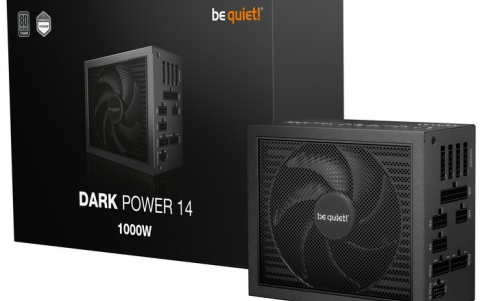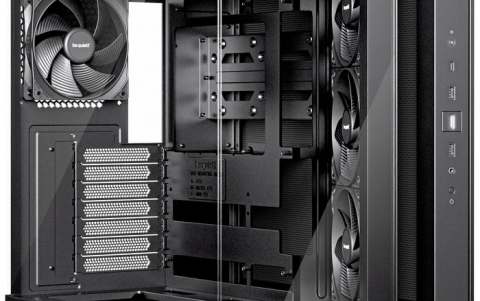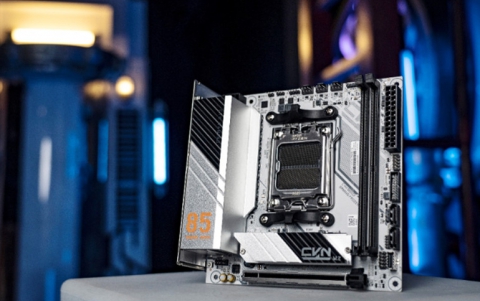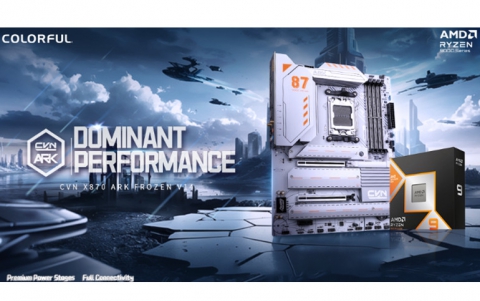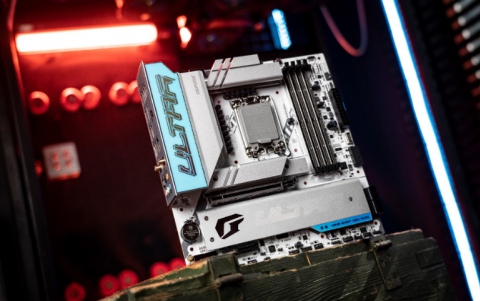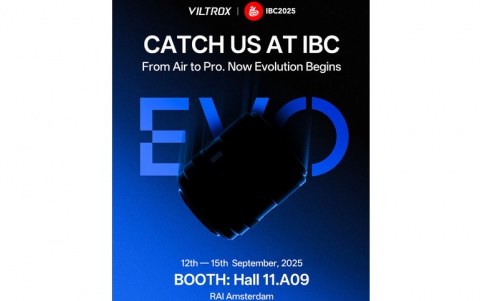Interview with Mr Frank Simonis of Philips
2. Interview with Frank Simonis of Philips
Review Pages
2. Interview with Frank Simonis of Philips
3. Interview with Frank Simonis of Philips
Concentrating on optical storage devices, what do you have planned for the future and where do you believe the market is heading. This is especially relevant in today's market where CD and DVD media have now reached their physical limits.
Indeed the maximum speed on DVD+R at 16x has been reached; the rotational spindle speed of 10000 rpm is the physical limit for a 12 cm polycarbonate disc. However our roadmap includes improvements in (re) write speeds on DVD+RW and higher write speeds in DVD+R DL, in which we expect a speed up already by the end of this year. Next to DVD+R/+RW, we are working on the next generation of optical storage, called Blu-ray Disc. Although we expect the CD and DVD market to grow during the years to come, the next generation is aimed at playing and recording High Definition TV and video, giving the consumer a quantum leap in performance and experience.
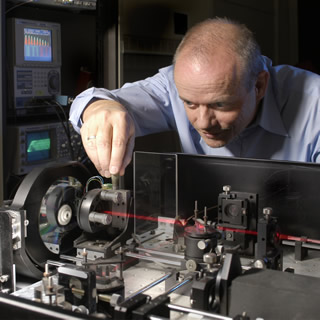 We know that Philips has always played a pioneering role. Can you tell us what Philips has on the drawing board?
We know that Philips has always played a pioneering role. Can you tell us what Philips has on the drawing board?
With the introduction of CD formats Philips took the leading role in setting Optical Standards. Also in the DVD timeframe, Philips with leading partners, created standards for recordable and rewritable media which had problems, setting the standard for the mass market. Today, the optical standards are making the third step in the evolution. Philips is again leading, together with the other BluRay partners, the creation of the most competitive standard based on Blue Laser technology.
Philips is committed to introducing new technologies in mass, volume applications for today's needs. This is why Philips has recently created the first important building block for the all-in-one recorder that can record and playback all the popular consumer optical formats. This compact optical pick-up unit (OPU), will be able to read and write CD-R/-RW, DVD+R(DL)/+RW and the next generation in optical storage, Blu-ray Disc (BD). The new triple writer OPU can be used for the design of IC chipsets for future data drives for the PC as well as consumer set-top box recorders. Mass production of the new OPU will start in 2006 when Philips anticipates that the mass-market demand for BD drives /recorders will pick-up (also see Q11-Q12).
Is capacity the name of the game? Is whoever comes up with the greatest capacity going to be the leader of the pack or should we be looking to other features. For example, DVD-RAM has some excellent features, especially when it comes to reliability, fault tolerance and integrity, and yet outside of Asia, it is not so popular.
To be successful in mass consumer markets, an optical recording system must fulfill three important consumer requirements:
- The basis for any recording system is data integrity, that's why the DVD+R/+RW format is robust: it has extensive error correction and defect management algorithms.
- Compatibility, the ability to record a disc and being able to play it back in the DVD player and DVD-ROM drive they already have in their household.
- Capacity and recording speed, especially in the PC world. That is why Philips developed the 8.5 GB DVD+R DL media and achieved the fastest recording speed of 16x. The DVD+R/RW format has been created with all three elements in mind from the start, combining them into one format that has it all.
The DVD-RAM system lacks compatibility, and doesn't have the performance (write speed and capacity) that is required on the PC and therefore does not deliver the same value proposition to a user as DVD+R/+RW.
Blue Ray and HD-DVD are impressive technologies offering a giant leap forward in capacity. Firstly, your views on Blu-Ray and HD-DVD.
Today, DVD recording is extremely popular in both PC and consumer video recording applications and has grown into a mass consumer market. But we must anticipate new developments and future requirements regarding capacity and performance. With the expected rise of digital TV, consumers will want to record their high-definition content onto a high capacity 25GB (single layer) or 50GB (double layer) media. For this reason, Philips together with Dell, Hitachi, HP, LG , Mitsubishi Electric, Panasonic, Pioneer, Samsung, Sharp, Sony, TDK and Thomson created the Blu-ray Disc format as the next generation optical disc format for video recording as well as PC storage applications.
Where do you believe Blue Ray differs from HD-DVD, how is one better, where are their comparative weaknesses?
As in the evolution from CD to DVD, there needs to be a quantum leap in performance in order to be able to successfully switch to a new optical storage format. Blu-ray Disc has a higher capacity and can store 25 GB(single layer) and 50GB (double layer). This added capacity opens the way in the future for new customer features and benefits. Another difference is that today, Blu-ray Disc is supported (see pervious question) by virtual all leading CE companies, as well as the two largest PC companies, and leading media manufacturers and has endorsement from the content industry. Not in the least since Blu-ray disc is being optimized for both PC and CE use and is the most robust optical storage disc to date. High-Definition video content is expected to drive the market in this new generation of optical storage. We expect that HD movies, HD TVs and digital broadcasting will enter our households in the coming years.
 Following on, obviously the CD is going to be with us for quite a while yet, as will the DVD, but with the rise in demand for the DVD format, and with projections forecasting that DVD writers will outsell CD writers, what role will each format play in the future?
Following on, obviously the CD is going to be with us for quite a while yet, as will the DVD, but with the rise in demand for the DVD format, and with projections forecasting that DVD writers will outsell CD writers, what role will each format play in the future?
Every optical storage format has is specific "killer" application that needs a specific storage capacity and performance. Audio was driving the CD format, and video is driving DVD. Both formats will coexist, since they serve different application areas. All DVD writers sold today can write both CD and DVD media, so it just depends on the task at hand and the cost of the disc, which media the consumer will record on their PC. So for audio creation and sharing of files less than 650 MB, the CD-R will remain popular, for DVD video creation, archiving and sharing of data up to 8.5 GB, a recordable DVD will be used.
Will you ever officially support the -R standard?
The DVD-R format does not give any advantage over the DVD+R/+RW format to the consumer. As DVD+R/+RW was designed from the start for both consumer video recording and PC applications, it gives optimal performance in both application areas.
Furthermore, the DVD+R/RW format has shown its leadership from the moment the formats hit the market. The recent introduction of DVD+R Double Layer and the DVD+R 16x are clear proof of this. Other formats, in spite of their earlier introduction, are just followers of the DVD+R/RW formats.
How do you think the battle of the -R and +R formats will evolve?
In the retail market you can see the trend that dual DVD�R/�RW writers are requested to avoid format discussions in store. The consumer will use the media that offers him/her the best quality, capacity, price and performance. We believe that DVD+R and DVD+RW will be the media of choice; all DVD+R media on the market passes verification and certification testing to ensure quality. Moreover, DVD+R is today available in 8.5GB DVD+R DL versions and can be used at all recording speeds, from 1x up to the new 16x speed. This means that older DVD+R writers can still write on the new media.
Review Pages
2. Interview with Frank Simonis of Philips
3. Interview with Frank Simonis of Philips

